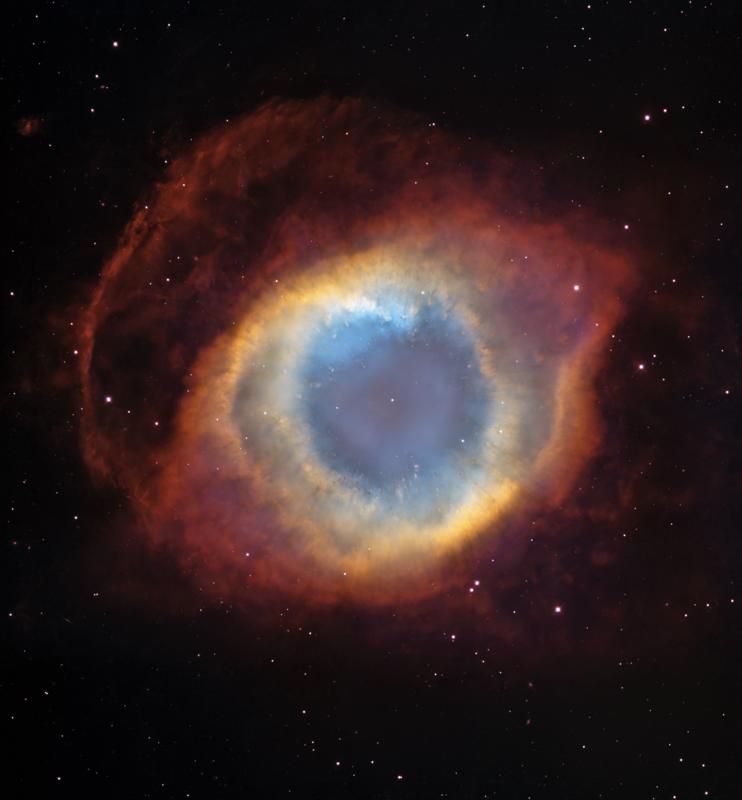By Jeremy Fejfar
 Anyone who has seen the pictures sent back by the Hubble space telescope knows that a belief in a god or the supernatural isn't necessary to inspire awe.
Anyone who has seen the pictures sent back by the Hubble space telescope knows that a belief in a god or the supernatural isn't necessary to inspire awe.
Through science, reality's wonder is revealed to us. Despite not being able to discern our movement directly, reasoning and careful observation lead us to the fact that the earth is whipping around our Sun at an astonishing 67,000 miles per hour.
It is hard to comprehend scale in this magnificent universe we find ourselves in. One million Earths would fit inside our sun. And our sun is certainly not one of the bigger stars out there. For example, we could fit 7 billion suns inside VY Canis Majoris. To put that in perspective, if the Earth were shrunk down until its diameter was equal to that of a penny, the relative diameter of our sun would be seven feet, and VY Canis Majoris be almost three miles across.
All of these stars appear as mere points of light in the night sky, which is our galaxy, the Milky Way. There are upwards of 400 billion stars in our galaxy. The human mind is simply not able to comprehend numbers at this scale. To try to conceptualize a number like 400 billion, imagine a second. Four hundred billion seconds would be more than 12,600 years. And that's just stars in our galaxy; there are hundreds of billions of other galaxies comprising our universe. I recommend newgrounds.com/portal/view/525347 for a great tool showing size comparisons of the very big and very small.
But as unfathomably large as these stars are, they are but specks of dust when compared to the utter emptiness of the universe. Besides the sun, the closest star to us is 4.2 light years away. This means that it takes a beam of light (traveling 186,000 miles per second) more than four years to get there. This trip would take 4.7 million years in a commercial airliner. And that's just the nearest star.
In the realm of the atomic, reality is no less awe-inspiring. Like the cosmos, emptiness is the rule in the realm of the atom. An atom is comprised of a nucleus in the center, with electrons orbiting it. The rest of the atom is empty space. If one were to increase the size of the nucleus of a hydrogen atom to the size of a marble, the electron would be smaller than a grain of sand - and it would be one and a half miles away. Everything, including ourselves, is almost entirely empty space. Quantum mechanics, which describes how physics works on an atomic scale, is almost impossible for a person to grasp intuitively. This is a strange realm where particles can be in two places at the same time, tunnel through barriers and pop into and out of existence. Yet our understanding of quantum theory underlies laser printers, iPods and electric "eyes" that automatically open doors at stores.
And this is where the true beauty of the natural universe comes full circle. We know that all atoms, including those that make up our bodies, were originally forged in the giant fusion reactors we call stars. When stars reach the end of their lives, they often explode (currently at the rate of 1 every second), scattering their atoms across the universe. Some 4.5 billion years ago, these atoms came together to form the Earth, and billions of years later, humans evolved from these same atoms. We are fundamentally and intricately related, not just to all living things, but to the very universe itself. As a noted science popularizer, Carl Sagan, once said, "The cosmos is also within us. We're made of star stuff. We are a way for the cosmos to know itself."
These are just a handful of examples demonstrating the wonder of the natural universe. I find our current understanding of the universe more magnificent than the sum of all the assertions and pronouncements made by all the priests, rabbis, and imams. I find it impossible to look at the scope of the universe and conclude that the earth is the crown jewel of creation. And here we are on a speck of dust orbiting an insignificant star, perhaps the only beings in the universe technologically advanced enough to understand the cosmos, to understand ourselves, and to understand our ancestors - the stars.
For some truly inspirational music and videos based in science, check out symphonyofscience.com .
Reprinted with permission. Jeremy Fejfar is a member of the La Crosse Area Freethought Society (LCAFS.org). -ed.
Reprinted with permission. Jeremy Fejfar is a member of the La Crosse Area Freethought Society (LCAFS.org). -ed.

